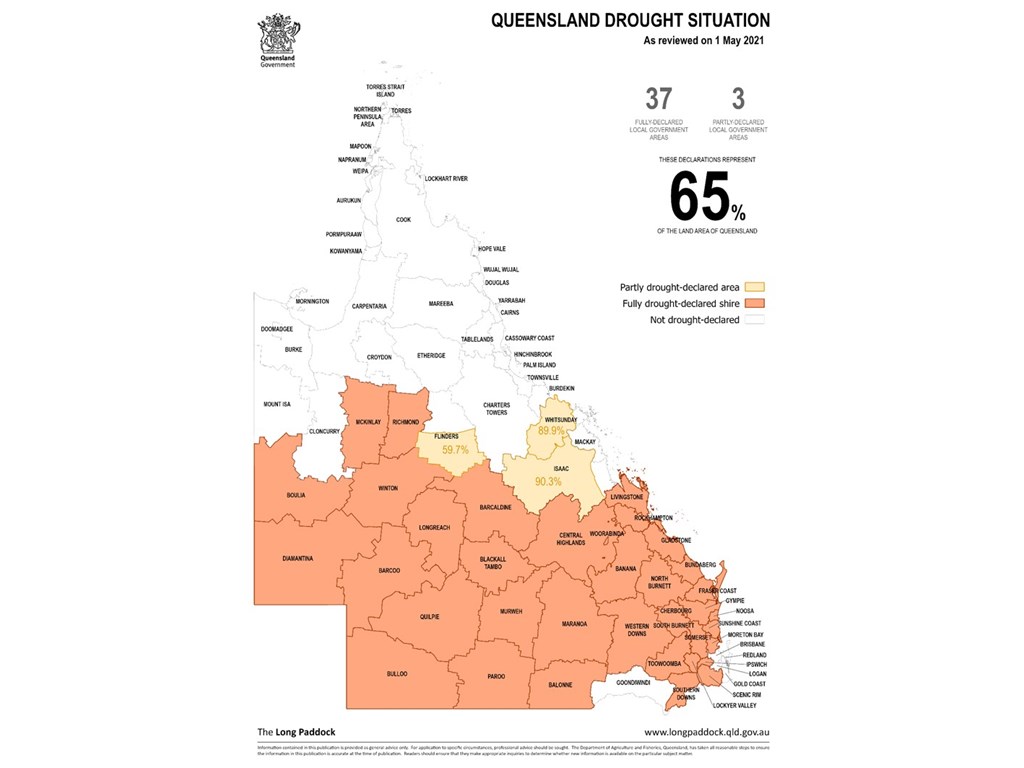
Recent solid rainfall across Queensland means five local government areas are no longer in drought, bringing the drought-declared area of Queensland down from 67.4% to 65%.
Minister for Agricultural Industry Development and Fisheries and Minister for Rural Communities Mark Furner said the late wet season rain fell across much of Southern and Central Queensland resulting in a well-needed flush of pasture growth, easing the severity of the drought conditions of recent years.
"Queensland experienced an overall better wet season than we've had for many years, with parts of the far north experiencing above average rainfall," Mr Furner said.
"The south-east coastal areas received beneficial rainfall in March and April, which improved conditions enough for some Local Drought Committees (LDCs) to recommend revoking their drought status."
Drought status is being revoked in:
- Logan City Council
- Redland City Council
- Gold Coast City Council
- Goondiwindi Regional Council
- and the drought-declared part of the Charters Towers Regional Council (south of the Flinders Highway and west of the Gregory Developmental Road).
Mr Furner said the remaining drought-declared local government areas did not receive enough rainfall for a revocation.
"Outside the south east, pasture quality and quantity, crop production, water reserves, animal welfare and breeder conception rates have all been negatively impacted by the lack of significant rainfall and high temperatures in spring and early summer, and there are still ongoing rainfall deficits," he said.
"This can be seen on the prototype Combined Drought Index (CDI), tailored for Australia based on a mix of drought indicators.
"The CDI avoids relying too heavily on rainfall measurement alone, which after isolated events can give a short-term impression a drought is over."
"The CDI is being developed by the Northern Australia Climate Program with funding from University of Southern Queensland, the Queensland Government's Drought and Climate Adaptation Program and Meat and Livestock Australia's Donor Company.
Mr Furner said LDCs meet at least once a year, generally at the end of the summer rainfall period, to discuss the impact of seasonal conditions and make recommendations about the drought status of their area.
"Any producers experiencing difficult conditions in any council area that is not drought-declared can apply for an Individually Droughted Property (IDP) declaration," he said.
"This gives them the same access to our drought assistance as an area declaration.
"Producers in any drought-declared area who believe their property conditions are improved enough to allow restocking can have their property individually revoked.
"If their drought declaration is revoked, producers can access returning from agistment and restocking freight subsidies through the Drought Relief Assistance Scheme (DRAS) for up to two years after the end of the drought declaration.
"To be eligible for these subsidies producers must ensure their property's drought declaration is first revoked before introducing any livestock."
The drought declaration map can be viewed at longpaddock.qld.gov.au and more information on the prototype CDI can be viewed at nacp.org.au/drought_monitor.






